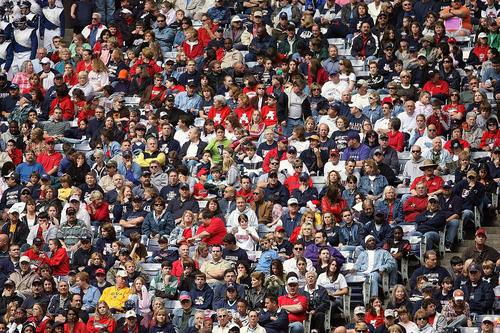6.21 人类人口
章节大纲
-
What will you learn
::你会学到什么-
The growth rate of the human
varies over time
::人类的增长率随时间而变化 -
How
has affected the growth of the human population
::如何影响人口增长
How do humans adapt to their environment?
::人类如何适应其环境?It could be said that the human population does not have to adapt to its environment, but forces the environment to change to suit us. We can live practically anywhere we want, eat all types of food , and build all types of housing. Because of all of these " adaptations ," our population has grown, after a slow start, considerably fast.
::可以说,人类不必适应其环境,而是迫使环境改变以适合我们。 我们可以在任何我们想要的地方生活,吃所有种类的食物,建造所有类型的住房。 由于所有这些“适应 ” , 我们的人口在缓慢的开始后增长很快。The Human Population
::人 人 人 人 人 人 人 人 人 人 人 人 人 人 人 人 人 人 人 人 人 人 人 人 人 人 人 人 人 人 人 人 人 人 人 人 人 人 人 人 人 人 人 人 人 人 人 人 人 人 人 人 人 人 人 人 人 人 人 人 人 人 人 人 人 人 人 人 人Humans have been called the most successful " weed species" Earth has ever seen. Like weeds, human populations are fast growing. They also disperse rapidly. They have colonized habitats from pole to pole. Overall, the human population has had a pattern of exponential growth , as shown in the Figure . The population increased very slowly at first. As it increased in size, so did its rate of growth.
::人类被称作有史以来最成功的“杂草物种”地球。像杂草一样,人类人口也在快速增长。它们也迅速分散。它们把栖息地从极到极的殖民化。总体而言,如图所示,人类人口呈指数增长模式。人口最初增长非常缓慢。随着人口规模的增长,其增长率也随之上升。Growth of the Human Population. This graph gives an overview of human population growth since 1800 AD. It took until about 1800 AD for the number of humans to reach 1 billion. It took only a little over 100 years for the number to reach 2 billion. Why do you think the human population began growing so fast? Early Population Growth
::早期人口增长Homo sapiens arose about 200,000 years ago in Africa. Early humans lived in small populations of nomadic hunters and gatherers. They first left Africa about 40,000 years ago. They soon moved throughout Europe, Asia, and Australia. By 10,000 years ago, they had reached the Americas. During this long period, birth and death rates were both fairly high. As a result, was slow.
::早期人类生活在游牧猎人和采集者的少量人口中。他们最初离开非洲的时间大约是40,000年前。他们很快迁移到欧洲、亚洲和澳大利亚各地。在10,000年前,他们到达了美洲。在这漫长的时期,出生和死亡率都相当高。结果,他们的速度缓慢。Humans invented agriculture about 10,000 years ago. This provided a bigger, more dependable food supply. It also let them settle down in villages and cities for the first time. The death rate increased because of diseases associated with domestic and crowded living conditions. The birth rate increased because there was more food and settled life offered other advantages. The combined effect was continued slow population growth.
::人类大约在一万年前发明了农业,这提供了更大、更可靠的食物供应,也使他们第一次在村庄和城市安顿下来,死亡率因与家庭和拥挤的生活条件有关的疾病而上升,出生率因食物和定居生活增加而上升,这带来了其他好处,其综合效应是人口增长持续缓慢。
Summary
::摘要-
Early humans lived in small populations of nomadic hunters and gatherers. Both birth and death rates were fairly high. As a result, human population growth was very slow.
::早期人类生活在游牧猎人和采集者的少量人口中,出生和死亡率都相当高,因此,人类人口增长非常缓慢。 -
The invention of agriculture increased both birth and death rates. The population continued to grow slowly.
::农业发明提高了出生率和死亡率,人口继续缓慢增长。
Review
::回顾-
Describe human population growth rates.
::描述人类人口增长率。 -
How did the invention of agriculture affect human birth and death rates? How did it affect human population growth?
::农业发明对人的出生和死亡率有何影响?对人口增长有何影响?
-
The growth rate of the human
varies over time

